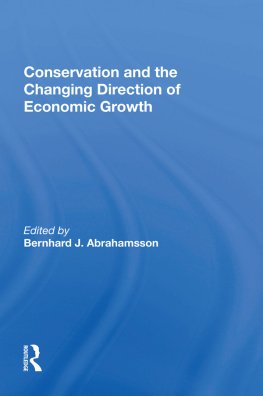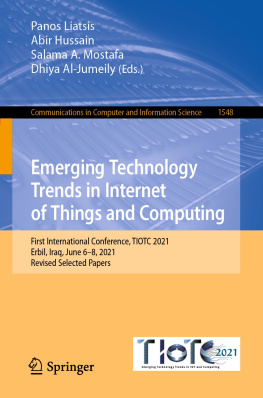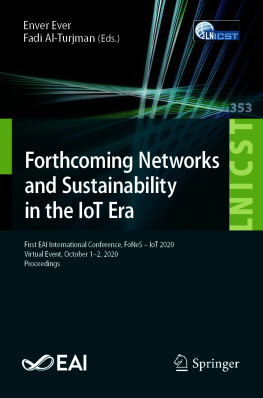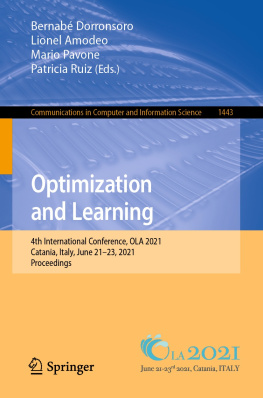Conservation and the Changing Direction of Economic Growth
Westview Special Studies in Natural Resources and Energy Management
Conservation and the Changing Direction of Economic Growth
edited by Bernhard J. Abrahamsson
The problem of energy resource scarcity is more related to financial and national security issues than to the availability of energy raw materials. This conclusion emerged from the June 1977 meeting of the Rocky Mountain Energy Economics Institute, which focused on the implications of the energy crisis for conservation and future economic growth in the U.S. This volume, based on six papers prepared for the June meeting, presents the view that, if flexibility of resource allocation is maintained, economic growth is not likely to come to a haltat least not in the Western world. Conservation can achieve substantial energy savings, but conservation alone cannot solve the problem. Additional domestic supplies are needed, and coal is considered by many to be the main alternate domestic energy resource. These issues pose crucial questions for future policy vis--vis both economics and the environment.
Bernhard J. Abrahamsson is professor of international economic relations at the Graduate School of International Studies and senior research economist at the Denver Research Institute (DRI), both at the University of Denver. Dr. Abrahamsson is presently involved in research on U.S. natural gas consumption in his capacity as director of the Gas Requirements Agency of DRI. His writings have been published in several journals and he recently edited The Changing Economics of World Energy (Westview Press).
Published with the cooperation of the Rocky Mountain Energy Economics Institute
First published in 1978 by Westview Press
Published in 2021 by Routledge
605 Third Avenue, New York, NY 10017
2 Park Square, Milton Park, Abingdon, Oxon OX14 4RN
Routledge is an imprint of the Taylor & Francis Group, an informa business
Copyright 1978 by Bernhard J. Abrahamsson
All rights reserved. No part of this book may be reprinted or reproduced or utilised in any form or by any electronic, mechanical, or other means, now known or hereafter invented, including photocopying and recording, or in any information storage or retrieval system, without permission in writing from the publishers.
Notice:
Product or corporate names may be trademarks or registered trademarks, and are used only for identification and explanation without intent to infringe.
Library of Congress Cataloging in Publication Data
Rocky Mountain Energy Economics Institute, 10th, Aspen, Colo., 1977.
Conservation and the changing direction of economic growth.
(Westview special studies in natural resources and energy management)
Revisions of papers presented at the conference held June 2629, 1977, and
sponsored by the Rocky Mountain Oil and Gas Association and the Denver Research
Institute.
1. Energy policy-United States-Congresses. 2. Energy conservation-United
States-Congresses. 3. United States-Economic policy-1971- -Congresses.
I. Abrahamsson, Bernhard J. II. Rocky Mountain Oil and Gas Association. III.
Denver. University. Denver Research Institute. IV. Title.
HD9502.U52R62 1977 333.7 77-28753
ISBN 13: 978-0-3670-2095-8 (hbk)
ISBN 13: 978-0-3671-7082-0 (pbk)
DOI: 10.4324/9780429050817
Contents
Bernhard. J. Abrahamsson
1. World Oil and Gas Supply: Whose Crisis?, Edward W. Erickson and Herbert S. Winokur, Jr.
2. Energy Scarcity and the U.S. Economic Future, James W. McKie
3. Intercountry Comparisons of Energy Use: Any Lessons for the United States?, Joel Darmstadter
4. U.S. Energy Conservation, L. G. Rawl
5. Coal Schizophrenia, or Be Sure Who Makes the Magic Potion, Richard L. Gordon
6. Critical Choices for National Energy Policy, Mtlton Lipton
- 1. World Oil and Gas Supply: Whose Crisis?
- 2. Energy Scarcity and the U.S. Economic Future
- 3. Intercountry Comparisons of Energy Use: Any Lessons for the United States?
- 4. U.S. Energy Conservation
- 5. Coal Schizophrenia, or Be Sure Who Makes the Magic Potion
- 6. Critical Choices for National Energy Policy
Guide
Figures and Tables
Figures
4.1. U.S. Energy Demand by Consuming Sector
4.2. Technical Potential Conservation in 1990 (Residential/Commercial)
4.3. Technical Potential Conservation in 1990 (Residential/Commercial and Transportation)
4.4. Technical Potential Conservation in 1990 (Residential/Commercial, Transportation, and Industrial)
4.5. U.S. Energy Supply
4.6. United States Oil and Gas Supply
Tables
1.1. Oil Demand and Supply Projections
1.2. World Demand and Production, 1980
1.3. Oil Demand and Supply Projections
1.4. Oil Balance of COMECON Countries
1.5. The Costs of Some Alternatives to Conventional Natural Gas
1.6. Interstate Total Reserve Additions vs. Intrastate Associated and Non-Associated Gas
1.7. The Range of Potential 1985 U.S. Supply Response
3.1 Per Capita Energy Consumption and Per Capita Gross Domestic Product, Nine Developed Countries, 1972
5.1. Alternative Estimates of U.S. Coal Resources and Reserves
6.1. U.S. Energy Demand, 1976, and Projections for 1985
6.2. Fuel Balances in the Industrial and Electric Utility Sectors, 1976, and Projections for 1985
Preface
The chapters in this book were originally given as discussion papers at the 1977 Rocky Mountain Energy Economics Institute, sponsored by the Rocky Mountain Oil and Gas Association. The institute met in Aspen, Colorado, from June 26 to June 29, and, as in previous years, the program was planned and organized by Mr. Bob Burch, who also served as the moderator throughout the proceedings. Before publication in this volume, most papers were substantially revised.
The institute began as the Rocky Mountain Petroleum Economics Institute in 1963 at Mr. Burchs initiative. While the original intention was to schedule future institutes biennially, more frequent conferences have been held in response to needs and interest, and 1977 marks the tenth such meeting. Each institute has been planned, organized, and implemented by Mr. Burch; but from the very beginning, a regional academic institution has been invited to cosponsor the event and to publish the proceedings. The University of Denver, through the Denver Research Institute, has performed this function since 1971.
The institute brings together individuals from the energy industries, government, and academic circles. The group is intentionally kept small so that active participation is encouraged and so that each can benefit from the available individual expertise and accumulated experience. Formal papers are presented to express diverse perspectives and views and to stimulate discussion. No transcript is kept of the discussions, but the formal papers are published and made available to the public after the conference.
We wish to thank Helen Kneeland of the Rocky Mountain Oil and Gas Association and Lynne Roll of the Industrial Economics Division of the Denver Research Institute at the University of Denver for their assistance in the preparation of this work for publication.









